Table of Contents:
- The Modern Celtic Nations
- The Ancient Celts
- Genetic Studies
- The Origin of the Celts and their Relation to the Basques
The early history of Europe is dominated by the Greeks and Romans, with their impressive achievements not only in conquest but also in science, philosophy, art, and culture. Since the romantic period during the Age of Enlightenment in the 18th and 19th centuries other ethnolinguistic groups, such as the ancient Germanic tribes and their later cousins, the Vikings, have joined them in the limelight. The same is true for the Celts, although it doesn’t seem to be entirely clear who exactly ‘the Celts’ were, or are, as opposed to some of the other peoples of early Europe.
The Modern Celtic Nations
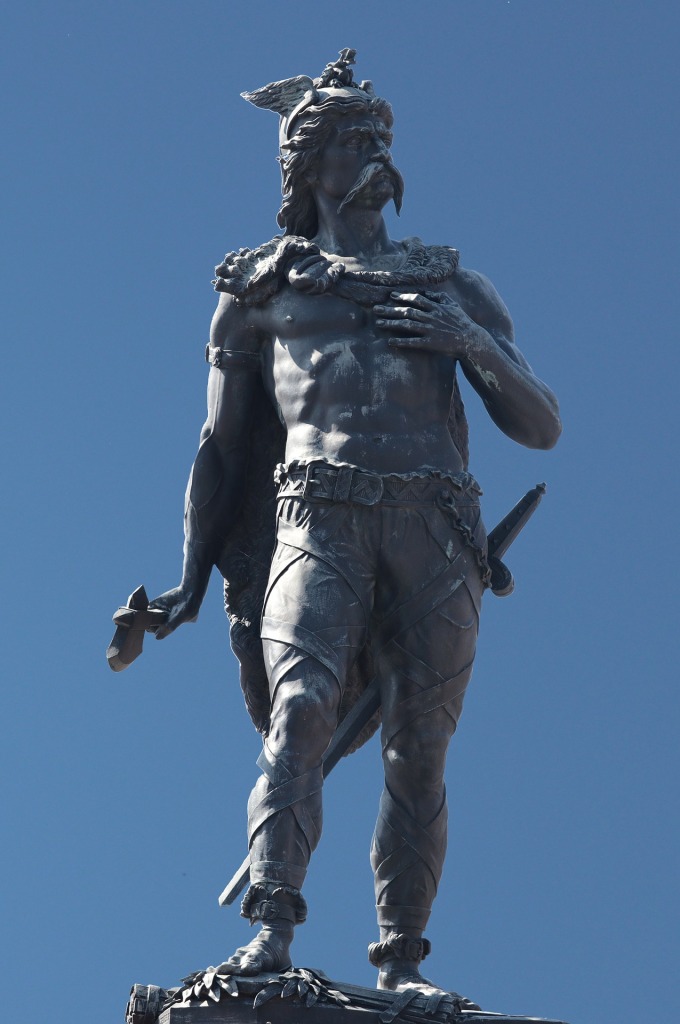
There are the modern self-proclaimed Celtic nations of Ireland, Scotland, and Wales, with the English region of Cornwall and the French province of ‘la Bretagne’ (Brittany) also claiming Celtic heritage. Interestingly, the name of the latter is derived from the island of ‘Britannia’ and the Breton language is a descendant of the indigenous Celtic language of England, related to modern Welsh. As is evident, the modern ‘Celts’ seem to be confined to the British Isles and Brittany, which in itself could be called a ‘British’ colony, in the sense that the original Celtic Britons migrated to Brittany from Britain. But does this indicate that the origin of this ancient people lies within this particular region of Europe?
As a matter of fact, before the 17th century none of the inhabitants of either of the aforementioned places called themselves Celtic; they were Irish, Scottish, Welsh, Cornish, and Breton respectively and barely anyone but scholars of ancient Greek and Roman writers had even head of ‘The Celts’. There was and is an obvious connection regarding language, with Scottish and Irish Gaelic even sharing the same name for their respective tongues, and the modern Welsh recognizing some words in modern Breton and vice versa. But there are obvious relations between other Indo-European languages in Europe and none of them have developed a similar sense of ethnic unity and shared heritage as have the modern Celts. Perhaps this development can be seen as a reaction to the expansion of the Anglo-Saxons and later English and their push for supremacy over the Isles: The indigenous inhabitants saw themselves as more similar to each other than to the newcomers from the continent and banded together, albeit more in a spiritual than in an actual sense. Of course, this cannot be regarded as a change that came about within the matter of years or even decades, but rather over several centuries or even millennia since the Anglo-Saxon settlement of Britain had begun.
If this feeling of ‘togetherness’ among the modern Celts is merely a phenomenon of modernity, this still leaves the question of the linguistic connection between these peoples. When languages share common features it implies either more or less intensive contact between its speakers over a substantial amount of time or a common origin, the latter of which is the more likely in this particular case because of the sheer amount of shared innovations in grammar and vocabulary.
In the following, we will try to answer this question by taking a closer look at who the people described as ‘Celts’ in antiquity were and where they’ve come from. In order for us to do so, we will examine Europe’s prehistoric past, beginning with a language ancestral not only to Celtic but to the majority of European languages.
The Ancient Celts
The Celts have been mentioned by Greek and Roman scholars and historians as early as the first millennium BC and it seems that they’ve covered an area far larger than their modern distribution along the fringes of North-Western Europe, all the way from Iberia to Britain, and from the Atlantic to Anatolia. Taking this vast area of distribution into account makes it much more challenging to determine a point-origin for the ancient Celts.
At this point, it is important to mention that the Celts should, in fact, not be regarded as a singular ethnic group, much in the same way as we tend to do today with other ethnic groups of Antiquity such as the Greeks or the Germanic tribes. The former were divided into several city-states for most of their history and the latter never unified at all. The same holds true for the Celts: At no point in history was their one Celtic people. If anything, they were a group of peoples, which shared some characteristics such as language, culture, and mythology, but differed significantly in other respects. Greek and Roman scholars tended to lump everybody north of the Mediterranean together as Barbarians at first and later started to differentiate between Scythians in the East (an Iranian people) and Celts in the West. From the 1st century BC onwards, they also started to acknowledge the existence of a third group between the aforementioned, the Germans. In this context, the Celts could be viewed as a Greco-Roman generalization of North-Western Europeans, similar to modern generalizations of ethnicities other than one’s own.
That being said, the most striking and perhaps the most important of the aforementioned similarities for the classification of ancient and modern Celtic peoples is language, and as we’ve established previously, the different Celtic languages indicate a common origin.
The Celts as Indo-Europeans
The Celtic languages belong to a greater family of languages known as ‘Indo-European‘, which means it shares some characteristics with other languages belonging to the same group, such as the aforementioned Germanic and Romance languages, but also Greek, Slavic, Baltic, and Hindi, just to name a few. Although there are similarities, Celtic developed some innovations of its own to differentiate it from the other Indo-European languages by around 1000 BC.
Since the discovery of the relation between these tongues in the 19th century, it has been established that they all descend from a common ancestor, known as Proto-Indo-European, spoken between 4000 and 2500 BC in the Eurasian Steppes north of the Black Sea and the Caucasus Mountains. Recent advances in archaeogenetics have confirmed that the majority of peoples across Eurasia, which speak an Indo-European language, descend, at least in part, from the speakers of this Proto-Language. And thus was the case with the Celts.
David Reich, in his 2018 book “Who We Are and How We Got Here” points out that about 90% percent of the indigenous population of the British Isles was replaced by the newcomers from the continent, which means that the majority of the people who build Stonehenge disappeared almost entirely from the face of the earth due to the arrival of Indo-Europeans to Britain. At this point in their migrations, however, the steppe peoples had intermixed with others on their way.
Before the Indo-European Migrations Europe was inhabited by a mix of farmers from Anatolia (modern-day Turkey) and indigenous Hunter-Gatherers, the latter of which had arrived in Europe over 40.000 years ago and were the first anatomically modern humans to settle on the continent. This mixed population was given the name ‘Old Europeans’ by Marija Gimbutas to distinguish them from Europeans after the arrival of the Indo-Europeans. She describes them as a matrilineal and matrilocal society, in which men and women were not only equal, but the latter may have enjoyed even greater importance than the former. This is shown by the overwhelming amount of miniature statues and figurines depicting women as goddesses, worshipped at altars in almost every house of every settlement of Old Europe.
This changed with the arrival of the warlike, male-centred riders from the steppes, who brought their gods of the All-Seeing Sky Father and the Dragon-Slaying Thunderer with them and replaced the indigenous pantheon of female fertility goddesses. They quickly assumed the position of the social elite wherever they went and it was their language, that was henceforth spoken, albeit with indigenous influences, which ultimately led to the development of the different languages of Europe. Their impact was profound and did not only change the language, gods, and the genetic makeup of the continent, but also its social norms, customs, and hierarchical order.
One of the new peoples that emerged from this mixing of ethnic groups were the Celts, or possibly, as is indicated by similarities between the Celtic and Italic languages, the Italo-Celts. If the latter theory is true, then the homeland in which this language group emerged can only be guessed with varying degrees of certainty. One possibility sees it in East-Central Europe, after which the ancestors of the Celts moved westwards, whilst the ancestors of the Italic peoples moved south-westwards. Another theory put forward sees Celtic as but a branch of Italic, originating in northern Italy and spreading from there. Both theories are still debated and no conclusion on the exact origin of the Celtic languages and its relation to Italic has been drawn yet. After all, the Celts and the Italic speaking peoples have lived in close proximity for centuries, if not millennia, and the perceived similarities could just be a result of cultural exchange and borrowing.
No matter whether the Celts share a more recent common ancestors with the Italics, are descendant of them or just held close relations with their southernly neighbours, most archaeologists agree that the earliest culture with which the Celts can be identified is the Central European Hallstatt Culture, and its succeeding La Tene Culture, both of which shall be examined in the following.
The Hallstatt and La Tene Cultures
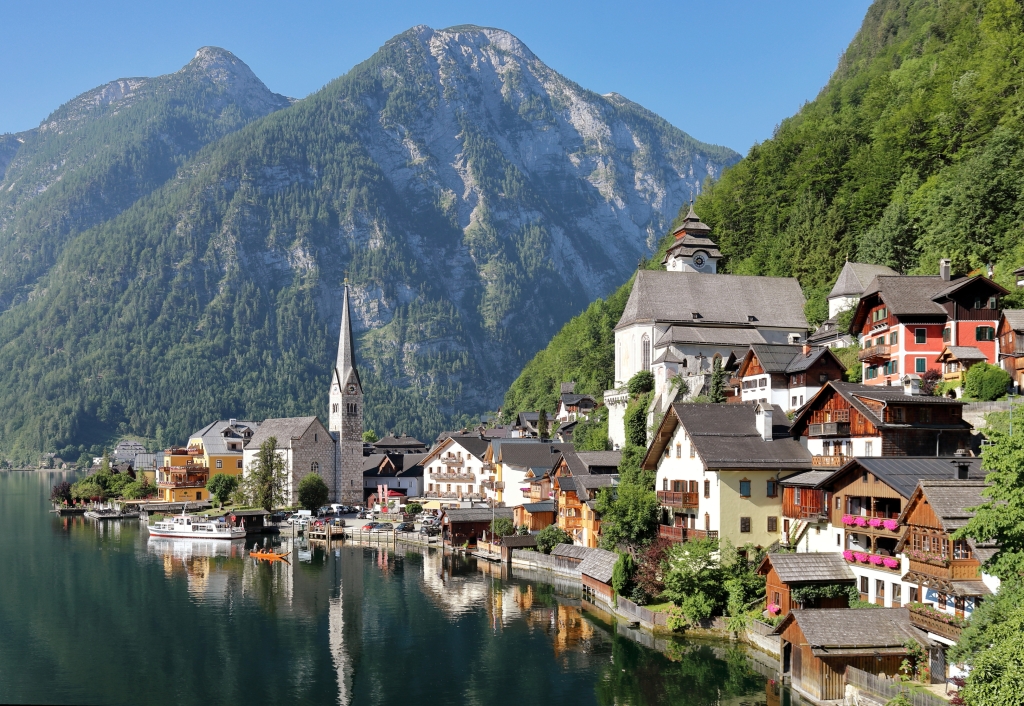
The first of our archaeological cultures received its name from the small Austrian town of Hallstatt, which was famed for its rich salt mines in the late Bronze Age and early Iron Age of Central Europe. The culture’s core area lay somewhere around the Alps from where it expanded over large areas of the continent in the following centuries, up until the beginning of the Roman conquest from the south and the Germanic migrations from the north. It was subsequently succeeded by the La Tene Culture in many of the areas it had occupied previously. People lived as miners, where there were minerals to be mined, such as in Hallstatt itself, or as farmers and skilled craftsmen, fashioning some of the most advanced weapons and pieces of jewellery of its time.
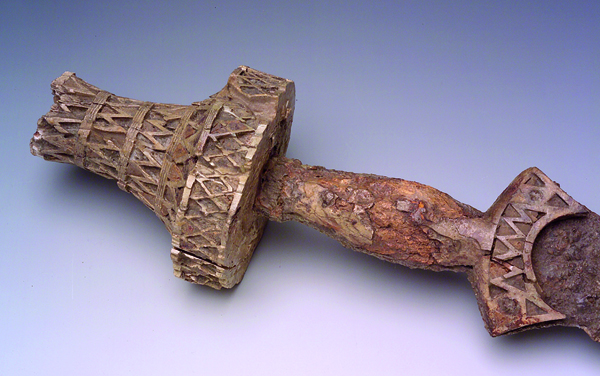
These are the Celts which we meet in the descriptions of Greek and Roman historians, with their warlike gods, their mystic druids and their – to the Mediterraneans – strange language, which could only be described as ‘barbaric’. Their society was far more sophisticated than what their reputation makes it out to be. If, in fact, Julius Caesar had not started his conquest of Gaul in the middle of the first century BC, the Gauls could have risen to a stage of civilization rivaling that of Rome or even Greece itself. Most of the population probably lived scattered across the countryside in small hamlets and villages, but there were also impressive hillforts with several hundred or even thousands of inhabitants, such as the Ipf in southern Germany.
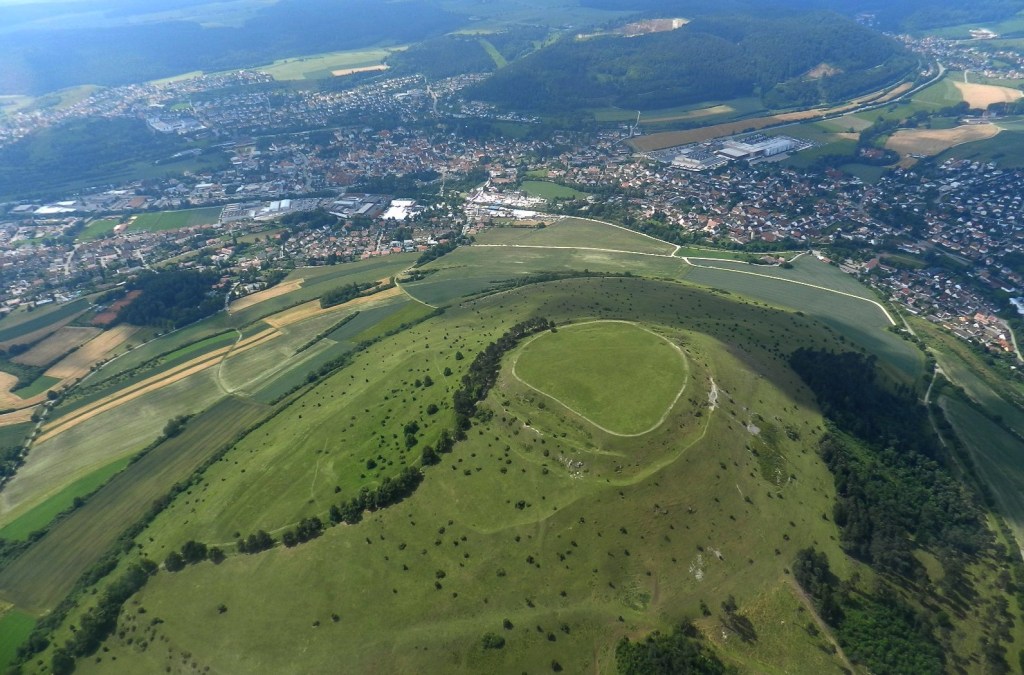
The ultimate demise of the Continental Celts, however, was that they never managed to unify in any significant way, such as the Romans did, albeit by conquest. Just like most of Europe at the time, they were divided into many smaller and bigger tribes which sometimes were allied with and other times waged war against each other. This made it easy for Caesar to employ the famed Roman strategy of divide et impera, divide and conquer.
To summarize: The Celts are an Indo-European people, entering Europe from the Eurasian steppes, perhaps together with the ancestors of the Italic peoples, splitting from them somewhere in East-Central Europe and shortly after established their own, Celtic cultural and linguistic identity around the Alps and spread across the continent from there.
Well, not everyone agrees with this theory, and we shall look into an alternative scenario in the next part.
The Atlantic Theory
Barry Cunliffe, the former Oxford Professor for European archaeology put forward a different hypothesis, which proposes that a trade network existing over millennia across the Western coast of Europe had led to the formation of a somewhat homogenous group, at least in terms of culture, which came to be known as the Celts by the early Iron Age.
Whilst there is definitive archaeological proof of such an economic connection it remains highly questionable whether the Celtic language actually formed in western Europe, as suggested by Cunliffe, especially when his hypothesis is compared to Marija Gimbutas Kurgan hypothesis, revised by David Anthony in 2007, according to which all Indo-European languages originated north of the Black Sea and the Caucasus Mountains. It remains a possibility, however, that after the Celtic languages formed, most likely somewhere in Central Europe, as has been shown above, that this ‘Atlantic Iron Age Trade Network’ contributed to the spread of these languages across Western Europe. This could also be an explanation for the similarities between Celtiberian and the Goidelic languages of Ireland and Scotland.
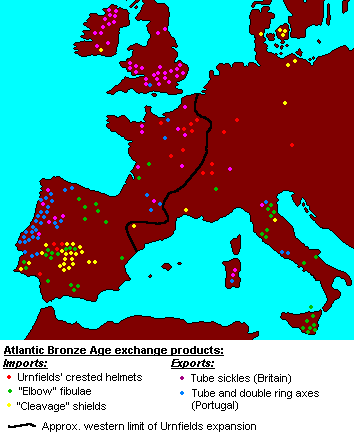
And this would be a most compelling argument, would it not be for some recent results of archaeogenetic studies, which enables the extraction of ancient DNA from human remains up to several hundreds of thousands of years ago. On the one hand, these studies have confirmed that the Indo-European homeland did, in fact, lie in the Eurasian Steppe and that most of Europe’s modern population derives, at least in part, from these nomads. But these studies also showed some evidence to support Cunliffe’s theory of an indigenous Atlantic origin of the Celts.
Genetic Studies
The early Celts have frequently been associated with the Haplogroup R1b, which is common throughout the western Indo-European Peoples, i.e. the Germans, Italics, and Celts. The particular subclade that is thought to be of Celtic origin exclusively is R1b-S116, which reaches its highest frequencies along the Atlantic facade, with other peaks around North-Eastern Switzerland and northern Italy, interestingly thought of as previous centres of La Tene Culture.

There seems to be an obvious connection in regards to the dominant haplogroup among modern Celtic speakers or descendants of Celtic speakers in Western Europe, however, there is no such connection in terms of autosomal admixture. What this implies is that Celtic language and culture seems to have been spread from centres across the Atlantic facade (and possibly Central Europe) throughout Europe.
Now, what does this mean for the origin of the Celts?
The Origin of the Celts and their Relation to the Basques
We are faced with a dilemma: The linguistic evidence supports a Celtic origin in the east, the genetic evidence supports an origin in the west and archaeology points to two different cultures which both have been identified as Celtic in the respective locations. So are the Celts, as proposed by Cunliffe, indigenous to Europe, or are they Indo-European?
The answer seems to be both Yes and No. Yes because the Celtic languages are obviously related to the other Indo-European languages and No because there seems to be a connection to the indigenous inhabitants of Europe.
Haplogroup R1b-S116, commonly found among the early Celts is also found in a very high frequency among the only non-Indo-European people in the western part of the continent: The Basque, among which this particular Haplogroup reaches a high of 75%.
Generally, when a local elite arrives in a new area they tend to take the women of the indigenous population, thus depriving the native men of passing on their Y-DNA. If R1b-S116 is in fact Indo-European and the steppe nomads infiltrated the Basques so thoroughly that 75% of their male lineages are Indo-European, would we not expect them to speak an Indo-European language?
But this is not the case, they speak Basque, a language with no known relatives, and thought to go back prior to the migrations from the steppe. Knowing this the point could be made, that R1b-S116 is a non-Indo-European subclade of R1b which entered Europe before the other subclades. Perhaps it was once widespread throughout the continent and got pushed to the fringes of Europe with the arrival of the Indo-Europeans. Over time most of the indigenous population assimilated into the new culture from the east and gradually lost their native speech, except for the Basques. But because of the ancient Atlantic trade network, which had been in place for millennia at this point, and the fact that these ‘Atlantic People’ spoke similar languages (or perhaps even a single ‘Proto-Basque’ language) in the past, they jointly developed a Proto-Celtic tongue out of a combination of the old and the new.
The origin of the Celtic language and people would then be a fusion of the native Atlantic People of Western Europe, which provided much of the culture and mythology of the Celts, and newcomers from the East, perhaps manifested in the Hallstatt culture, who brought their language and customs with them.
If R1b-S116 is indigenous to a hypothesized Atlantic People of European natives, then how come that the other peoples with high frequencies of this haplogroup have not retained their language and speak an Indo-European tongue? If the model of a local male elite enforcing their language and culture on the population is correct, this would be illogical.
Unfortunately for us, history doesn’t tend to follow the rules of logic as the laws of physics do, a problem which lies in the unpredictable nature of mankind itself. Perhaps the majority of the natives adopted the new tongue to be able to communicate and trade with the newcomers in the east. Perhaps they were technologically more advanced and thus their language became dominant in many aspects of society, as later was the case with Latin in the Roman provinces.
At this point there is not enough conclusive evidence to definitely and decisively prove either of the theories proposed in this article and more in depth genetic studies will have to be conducted to yield At this point, there is not enough conclusive evidence to definitely and decisively prove either of the theories proposed in this article, and more in-depth genetic studies will have to be conducted to yield a better understanding of the origin of the ancient Celts. But the possibility of a mix between Old Europeans and Indo-Europeans with strong influences from the former remains intriguing to say the least.
References:
- https://en.wikipedia.org/wiki/Italo-Celtic, 11/07/2020.
- https://en.wikipedia.org/wiki/Hallstatt_culture, 28/07/2020.
- https://en.wikipedia.org/wiki/Proto-Celtic_language, 02/08/2020.
- https://www.eupedia.com/europe/maps_Y-DNA_haplogroups.shtml#Celtic, 28/07/2020.
- https://www.eupedia.com/europe/autosomal_maps_dodecad.shtml, 28/07/2020.
- Cunliffe, Barry: The Celts. A Very Short Introduction. Oxford University Press New York 2003.
- Maier, Bernhard: The Celts. Edinburgh University Press 2003.
- Reich, David: Who We Are and How We Got Here. Oxford University Press 2018.
Pingback: The Indo-European Language Family – European Origins
Pingback: The Origin and Expansion of the Celtic Peoples – European Origins
Pingback: The Ancient Italic Peoples – European Origins
Reblogged this on Muunyayo .
LikeLike
Hello Sarah, many thanks for your interest in this article. The author of this essay is a student of history who wishes to remain anonymous at this time. The authenticity of a scientific paper largely depends on the cited sources, which can be found at the bottom of the article, the majority of which should be up to academic standards. It is best to keep in mind, however, not to compare the theories postulated here to the highest level of academic research, seeing as this is the product of essentially a student project. It’s also important to remember that there are different theories about the origin of the Celts with no clear indication as to which is the more plausible one. Nevertheless, I find the idea of combining two of the most prominent theories proposed in this article interesting enough to entertain the general reader interested in the origin of the ancient Celts.
LikeLike
Why do we have no author-name for this essay, no credentials and research essentially from the internet? What really guarantees the authenticity of what you say?
LikeLike
The Aborigines of Italy spoke Latin; these people were the Ligurians, according to Ridgeway’s ‘Who were the Romans?’. The Romans did what you say, and took the language of the indigenes. People call it Romanization, when they speak of Spain and France, but the reverse is true. Strabo tells us that the whole Iberian Peninsula was Ligurian. The Ligurian tribe called Salyes by the Greeks were called Silures by the Romans… this tribe was in Provençal France. The Ligurians named the Loire and carried their name into Britain where they were called Lloegrians. These are the long-barrow long-heads of Thurnam.
The Celts are round-heads and so are the Basques (although they have long faces).
The short dark people of the mines are the Ligurians. Their body type hasn’t changed from the 5’6″ men, with larger chests than the Nordics, and their muscular women. They had (45% of them), in a study done in 1965, type O blood. The type A among them were not miners, and were Nordic in type. The type B was 10-12 %, which seems to be Asian.
These short dark people of the mines are the Druids, because according to the writings of Rhys and Davies, McBain and Dawkins, the aborigines were the Druids. At Massalia the Ligurians had the Nemeton.
So much for whom the Celts are not. Today, the universities are telling us that Celtic means Celtic-speaking… the same universities who teach second-languages right down the hall. Celts used to mean forest-people. Their axes were probably also called celts.
The Basques have a most famous person by the name of Loyola who started the Inquisition, creating crypto-murrano-converso status at the point of the sword. How much else was hidden in those days? The original language of the country was generally taken by its invaders. The round-heads cannot claim to be long-heads. And non-painters cannot claim to be Cro-Magnons. I sense a history that has been purposefully obscured in the Basques. And unless there comes to our attention a missing link between Turanians and Celtic, an equally vague source for Celtic… er… metalworking abilities.
LikeLike
Thanks for the feedback! Always nice when someone appreciate ones work.
LikeLiked by 1 person
Thanks for sharing this!!! The Celts are certainly a people who have equally frustrated and fascinated those studying their culture, their origins shrouded in mystery as they themselves.
LikeLiked by 1 person
Hello Tony, thank you for your feedback. The symbol at the top of the website is the site logo and has nothing to do with the individual post. The posts on this website concern everything revolving around the Indo-Europeans, to which the Celts as well as the Slavs, belong. The logo was chosen because the Swastika is a pan Indo-European symbol, variations of which occur in most Indo-European cultures. This particular version was chosen, because it had not been used by the Third Reich and is thus not commonly associated with the nazis. In regards to the theory proposed in this article, it merely is a fusion of two of the most widely accepted models in regards to the origin of the Celts, taking all the available evidence into account and I’m certainly not the first one making this proposition. I hope this suffices as an explanation.
LikeLiked by 1 person
Why do you show a Slavic symbol when you are talking about Celts and R1b, when Slavs are R1a Are trying to confuse people so legitimate people have to disprove your stupid theory.
LikeLike
Thank you!
LikeLiked by 1 person
This is so fascinating! It’s so interesting to find out where some of my ancestors (may have) originally come from. The level of research is incredible, well done!
LikeLiked by 1 person
Thank you! One of my top priorities is research to be able to provide reliable high quality content.
LikeLiked by 1 person
I’m always intrigued by the depth of research and history in your posts.
LikeLiked by 1 person